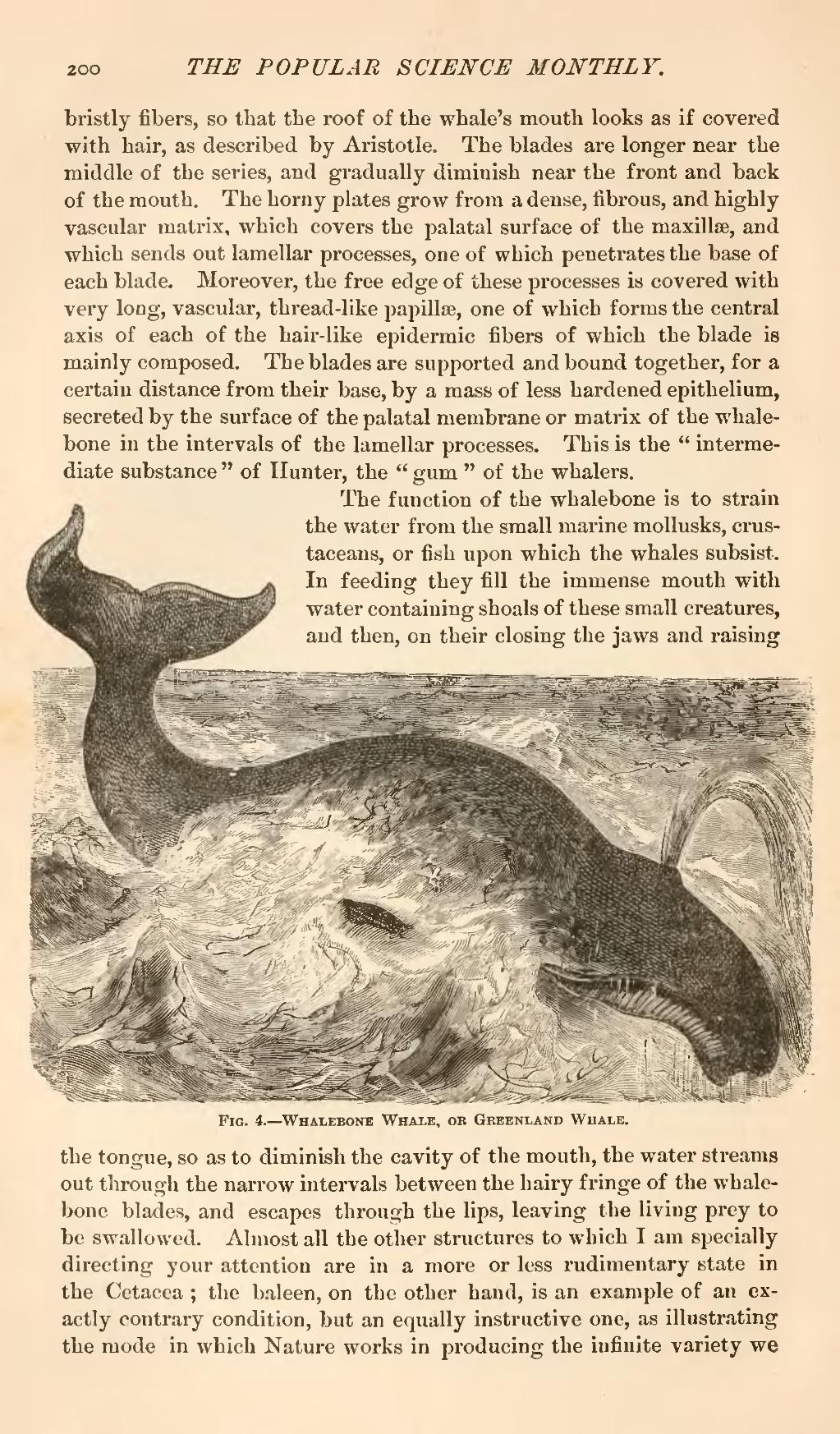bristly fibers, so that the roof of the whale's mouth looks as if covered with hair, as described by Aristotle. The blades are longer near the middle of the series, and gradually diminish near the front and back of the mouth. The horny plates grow from a dense, fibrous, and highly vascular matrix, which covers the palatal surface of the maxillae, and which sends out lamellar processes, one of which penetrates the base of each blade. Moreover, the free edge of these processes is covered with very long, vascular, thread-like papillæ, one of which forms the central axis of each of the hair-like epidermic fibers of which the blade is mainly composed. The blades are supported and bound together, for a certain distance from their base, by a mass of less hardened epithelium, secreted by the surface of the palatal membrane or matrix of the whale-bone in the intervals of the lamellar processes. This is the "intermediate substance" of Hunter, the "gum" of the whalers.
The function of the whalebone is to strain the water from the small marine mollusks, crustaceans, or fish upon which the whales subsist. In feeding they fill the immense mouth with water containing shoals of these small creatures, and then, on their closing the jaws and raising

Fig. 4.—Whalebone Whale, or Greenland Whale.
the tongue, so as to diminish the cavity of the mouth, the water streams out through the narrow intervals between the hairy fringe of the whale-bone blades, and escapes through the lips, leaving the living prey to be swallowed. Almost all the other structures to which I am specially directing your attention are in a more or less rudimentary state in the Cetacea; the baleen, on the other hand, is an example of an exactly contrary condition, but an equally instructive one, as illustrating the mode in which Nature works in producing the infinite variety we

